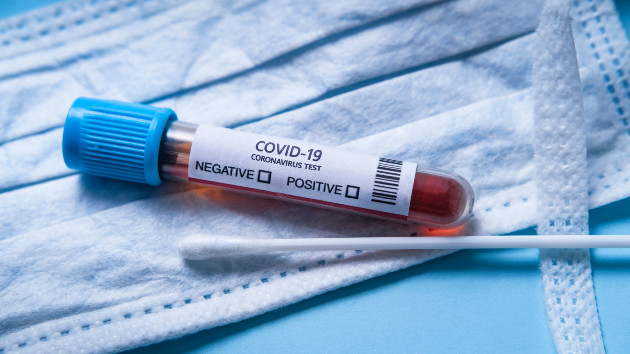(NEW YORK) — Millions of Americans say they’ve had long COVID, and some say they’re still battling it, according to new federal data.
Two new reports, published early Tuesday by the Centers for Disease Control and Prevention’s National Center for Health Statistics, looked at data from the 2022 National Health Interview Survey.
They found that, in 2022, 6.9% of adults — equivalent to about 18 million Americans — reported ever having long COVID while 3.4% — about 8.8 million — said they currently had the condition, according to 2022 U.S. Census estimates.
Meanwhile, 1.5% of children — roughly one million Americans — ever had long COVID while 0.5% — about 360,000 — reported currently having long COVID.
Long COVID is a condition that occurs when patients still have symptoms at least four weeks after they have cleared the infection. In some cases, symptoms can be experienced for months or years.
Symptoms vary and can include fatigue, difficulty breathing, headaches, brain fog, joint and muscle pain and continued loss of taste and smell, according to the CDC.
It’s unclear what causes people to develop long COVID but research is ongoing.
In the first report, the NCHS team looked at adults and found women were more likely than men to have ever had or currently have long COVID.
Nearly twice as many women, 4.4%, said they currently had long COVID compared to 2.3% of men, the report found.
When it came to age, adults between ages 35 and 49 were the most likely to have had long COVID at some point or currently have it followed by those between ages 50 and 64. Senior citizens aged 65 and older were the least likely to have it in both categories.
Among racial and ethnic groups, Hispanic adults were the most likely to have had long COVID at 8.3% followed by 7.1% for white adults, 5.4% for Black adults and 2.6% for Asian adults.
However, among those currently experiencing long COVID, white adults slightly edged out Hispanic adults at 3.7% compared to 3.4%.
In the second report, looking at children aged 17 and younger, many of the findings were similar. For example, girls were more likely than boys to have ever had or still have long COVID.
Additionally, Hispanic children had the highest percentage of reporting previous long COVID and white children had the highest reporting of current long COVID.
By age group, children between ages 12 and 17 were the most likely to ever have or still have long COVID at 2.0% and 0.8%, respectively.
Meanwhile, 1.0% of children aged 8 and younger and 0.8% between ages 8 and 11 reported having long COVID at some point, while 0.2% of the youngest group and 0.3% of the middle group reported currently having long COVID.
“While the percentage of children who currently have long COVID was low, the differences observed by age persisted,” the authors wrote.
The report cited data from the Nationwide Commercial Laboratory Seroprevalence Survey that found about 92% of children currently have antibodies in blood samples, indicating a previous infection, but that long COVID among children is quite rare.
Earlier this year, the Biden administration announced it was forming a new Office of Long COVID Research and Practice to study the condition and help those who have been diagnosed with it.
The office, which will be under the Department of Health and Human Services, “is charged with on-going coordination of the whole-of-government response to the longer-term effects of COVID-19,” according to a news release.
Copyright © 2023, ABC Audio. All rights reserved.












